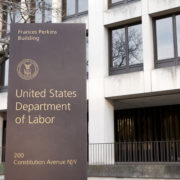Avoid These FMLA Pitfalls
Employers should never take a leave from dealing with the Family and Medical Leave Act’s (FMLA) requirements. The FMLA entitles eligible employees of covered employers to take up to 12 weeks unpaid, job-protected leave in a 12-month period for specified family and medical reasons. It guarantees continuation of group health insurance coverage under the same terms and conditions as if the employee had not taken leave. Read about these common FMLA pitfalls.
1. Untimely FMLA Requests
When an employee takes extended leave, managers sometimes fail to tell HR right away. This can be disastrous, because an employer cannot retroactively implement FMLA leave. If a manager waits a week to inform HR, it could delay the start of the 12-week FMLA period. This means an employee could end up taking more than 12 weeks of leave, which would impact staffing and productivity. To effectively manage FMLA, an employer must take proactive measures to properly enter and account for leave time.
Contractor Workforce Management allows employees to request FMLA like any other benefit time. If the manager fails to act on the request, Contractor Workforce Management reminds the manager and notifies HR. Employees do not receive pay for these hours, but the hours are tracked.
2. Failing to Keep Track
Another common mistake employers make when managing FMLA is failing to keep track of an employee’s use of FMLA leave, particularly when it is intermittent. As a result, an employer might give the employee more FMLA leave than he or she is entitled to. Employees can take FMLA leave in as little as 15 minute increments, so a robust, accurate system is crucial. Contractor Workforce Management allows organizations to record each employee’s FMLA leave. It tracks total hours allowed (480), hours taken, and hours remaining.
3. Missing Required Notices
Employers sometimes fail to provide required notices to employees. FMLA requires employers to provide four notices to employees seeking FMLA leave:
- A general notice. This is a permanent notice that employees are always able to access, such as a poster on the wall or in an online employee portal.
- An eligibility notice. When an employee requests FMLA leave, the employer must give the employee a written acceptance/denial letter within five days of the request.
- A rights and responsibilities notice. Every time an employer gives an eligibility notice, the employer must also provide a notice detailing the employee’s rights and responsibilities.
- A designation notice. This is a written notice that an employee’s leave is approved/unapproved under FMLA.
Employers must stay on top of these notices to comply with the law.
4. Providing Overly Broad Coverage
Sometimes employers provide FMLA leave in situations that are not covered. For example, if an employee has not worked an appropriate amount of hours in the past 12 months, he or she is not eligible for FMLA leave. An employer can easily lose track of this if employees use a paper-based time & attendance system. If an employer allows unauthorized FMLA leave by mistake, and the employee later experiences a qualifying event, the employer may deny additional leave. In this case, the employer would be violating the law unintentionally. If the employee realizes this, the employer could face legal ramifications.
5. Accepting Incomplete Certifications
In some cases, like when an employee is suffering from a severe health condition, employers require a certification to prove an employee needs to take leave. However, employers sometimes accept incomplete certifications that are incomplete. For example, an incomplete certification may not state the frequency and duration of the intermittent leave.
6. Enabling FMLA Abuse
The FMLA is ripe for employee abuse. Some employers find themselves with large numbers of employees with certified intermittent leave. Those employers need a plan to keep all employees honest with respect to their use of FMLA.
7. Overlooking the ADA
Employers sometimes fail to realize that a serious health condition that requires 12 weeks of FMLA leave may also constitute a disability under the Americans with Disabilities Act (ADA). Even after 12 weeks of FMLA leave, the ADA or state law may require more leave as a reasonable accommodation.
8. Not Having FMLA Policy
Employers can choose to implement FMLA leave on a rolling 12-month period or within a calendar year. Every organization should have a written FMLA policy that addresses this choice. This way, the employer can choose whichever option is most advantageous rather than leaving the choice up to the employee. Typically, the 12-month rolling option is best for organizations. If using the calendar period, employees can stack leave during the last 12 weeks of one year and the first 12 weeks of the new year.
9. Failing to Train Supervisors about Managing FMLA
Untrained supervisors might not handle FMLA requests appropriately, and may actually violate the law. To avoid legal ramifications, organizations should train all supervisors about managing FMLA — even those ones who do not typically administer leave.
Contractor Workforce Management FMLA Solutions
Contractor Workforce Management solutions help organizations manage FMLA requirements in every situation.
- Employees can request FMLA from any location using any internet-enabled device. FMLA requests go to the employee’s manager for approval. On approval, non-payable records go through to the employee’s time and attendance records. If the employee is scheduled to work, their shifts are automatically re-opened.
- Thereafter, either the manager or HR can document any additional leave the employee takes. If a manager fails to respond to the employee’s request promptly, the manager receives an automated reminder. The employee does not receive pay for these hours but the hours are tracked. Contractor Workforce Management also maintains a complete history of FMLA requests.
- Employers can establish a balance of the allowable hours, and Contractor Workforce Management automatically updates these hours by FMLA transactions. For example, if the employee has taken 200 hours the remaining balance would be 280 hours. Contractor Workforce Management keeps a detailed record of all transactions.
- If the employee requests more than 480 hours of FMLA, the request will be blocked.
- HR can enter the 480 hours into the employee record when the FMLA time commences.

